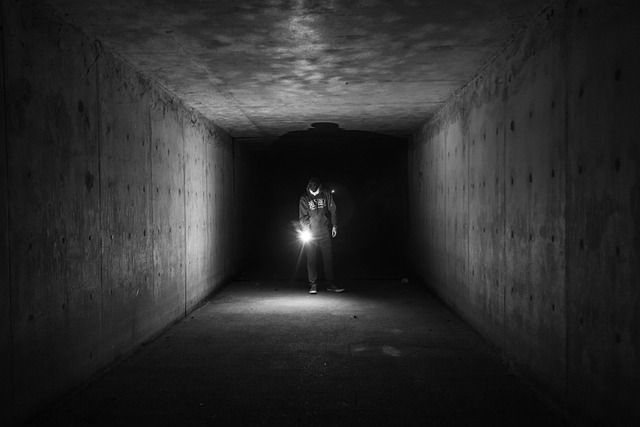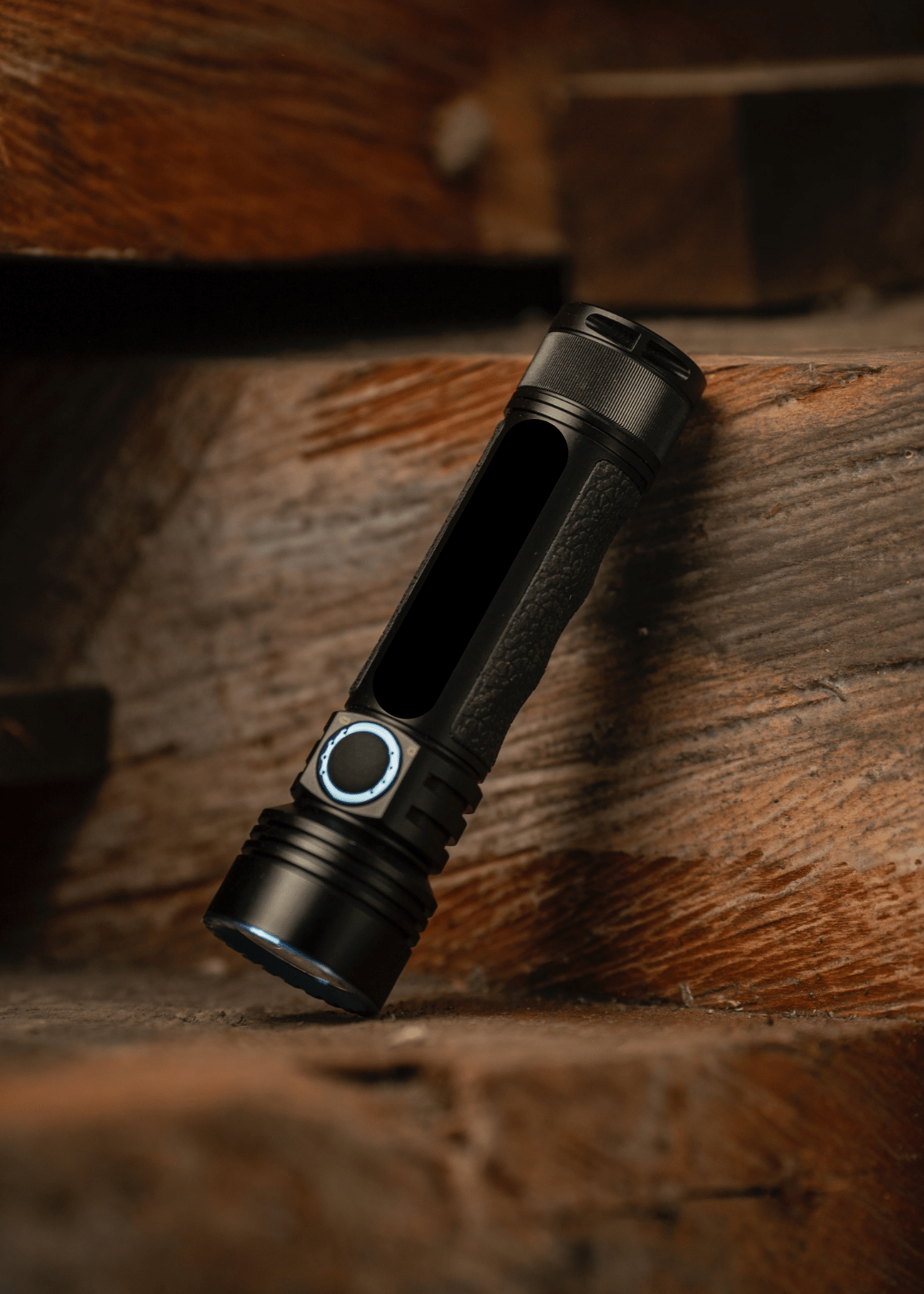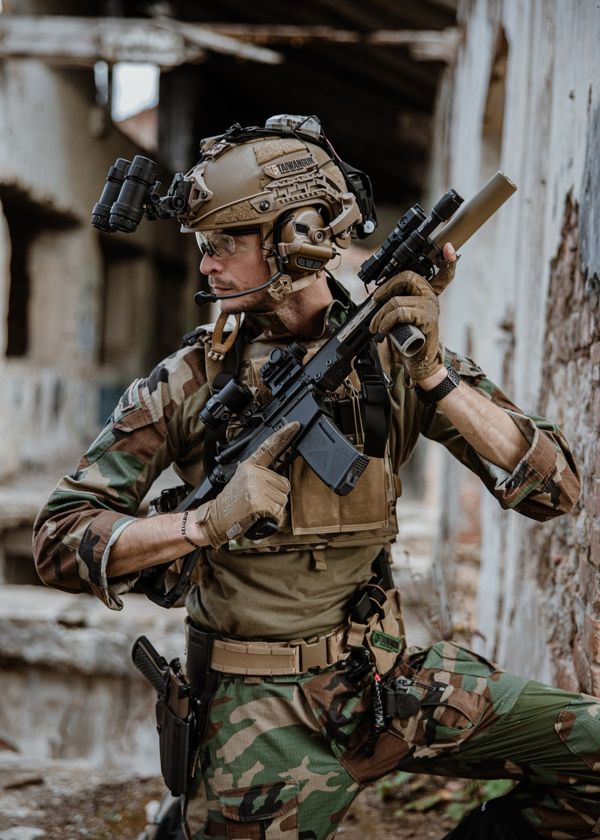There are many ways to power a rechargeable flashlight these days. The standard way is using AAA or AA batteries and continue to replace them as they get old and lose their charge.
The newest battery technology is by way of rechargeable batteries built into the flashlight via USB port. This allows you to save time and money searching for batteries late at night when your flashlight suddenly decides to not work.
Rechargeable Flashlight
So, what makes a flashlight rechargeable? Is it the batteries or the internal parts or both? A rechargeable flashlight is a portable lighting device that is designed to be powered by a rechargeable battery instead of disposable batteries.
It typically consists of a light source, such as an LED (Light-Emitting Diode), and a built-in rechargeable battery pack. The flashlight can be charged by connecting it to a power source, such as a wall outlet or a USB port, using a compatible charging cable.



Batteries Used
- Lithium-ion (Li-ion): Lithium-ion batteries are commonly used in rechargeable flashlights due to their high energy density, lightweight nature, and longer lifespan. They provide a reliable and consistent power source, making them a popular choice for various electronic devices.
- Nickel Cadmium (NiCd): Although less common these days due to environmental concerns, some older rechargeable flashlights may still use NiCd batteries. NiCd batteries are known for their ability to withstand high discharge rates and extreme temperatures. However, they have a lower energy density compared to Li-ion and NiMH batteries and are more prone to memory effect.
- Lithium Polymer (LiPo): LiPo batteries are a lightweight and compact alternative to traditional cylindrical Li-ion batteries. They are commonly used in smaller rechargeable flashlights and offer a higher energy density. LiPo batteries can be molded into various shapes, allowing for more design flexibility in flashlight construction.
- Sealed Lead Acid (SLA): Sealed Lead Acid batteries are larger and heavier compared to the aforementioned types and are typically used in more powerful rechargeable flashlights, such as those used in industrial or emergency situations. They offer high capacity and robustness but are less common in consumer-grade flashlights due to their weight and size.
- Nickel Metal Hydride (NiMH): NiMH batteries are another common type found in rechargeable flashlights. They offer a good balance between capacity and cost-effectiveness. NiMH batteries are known for their ability to hold a charge for extended periods and can be recharged many times before losing their effectiveness.
Why Is My Rechargeable Flashlight Not Charging
There are many reasons why a rechargeable flashlight wouldn't be charging. The first thing I would suggest checking is if you are using standard AA/AAA batteries make sure they are able to hold power and not corroded on either end.
Next, if your batteries themselves are still in working order, check to make sure the metal connectors inside the flashlight itself aren't bent or broken. If the battery isn't able to make contact with the metal connector it won't provide power to the flashlight.
If you have a USB charging flashlight there maybe an issue with the USB port itself. If it's lose inside the flashlight, isn't sitting tight or doesn't hold a charge it maybe the circuit board it's soldered to. Unfortunately the only fix at this point is to contact the manufacture to see if your flashlight is under warranty.
The final reason your rechargeable flashlight may not be charging is due to the usb charging cable. It maybe bent, torn, ripped or have water damage. These are all possible situations where the charging cable itself would be unusable.
How To Protect Your Flashlight
- Use a protective case or holster: A well-padded case or holster can also prevent the flashlight from turning on unintentionally, saving battery power and ensuring it's ready for use when needed.
- Regularly clean and maintain: Regularly inspect the flashlight for any dirt, debris, or corrosion on the battery terminals, and clean them gently using a soft cloth or cotton swab.
- Store in a cool and dry place: Exposure to extreme temperatures, humidity, or moisture can negatively affect the performance and lifespan of a rechargeable flashlight.



Rechargeable Flashlight FAQs
Here are the most common questions asked about charging a rechargeable flashlight.
How do I know if my rechargeable flashlight isn't charging properly?
If your rechargeable flashlight isn't charging properly, you may notice that it doesn't last as long as it used to or that it takes longer than usual to charge. You can also check the battery indicator light on the flashlight itself to see if it is still illuminated when plugged in.
What should I do if my rechargeable flashlight won't charge?
First, make sure that the battery is securely connected and that the charger is plugged into a working outlet. If this doesn't solve the issue, try using a different charger or replacing the battery entirely. If these steps don't work, then you may need to take your flashlight to a professional for repair.
How can I extend the life of my rechargeable flashlight?
To extend the life of your rechargeable flashlight, make sure to keep it clean and free from dust and debris. Additionally, avoid leaving your flashlight in direct sunlight or extreme temperatures as this can cause damage over time. Finally, always use fresh batteries and be sure not to overcharge them as this can reduce their lifespan.
If you are tired of wasting time & money on batteries for your flashlights it's time to invest in a rechargeable flashlight. Checkout our top picks for the Best Rechargeable Flashlights on the market today.

Your Friends,
LoveNatureReviews Team









